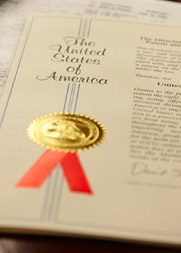In the United States, there are three different types of patents: (1) utility patents; (2) design patents; and (3) plant patents.
A utility patent may be granted for the invention or discovery of any sufficiently unique and useful process, machine, article of manufacture or chemical composition, or for any sufficiently unique and useful improvement of such.
A design patent may be granted for a sufficiently unique ornamental design (typically for an article of manufacture, but other types of designs are potentially patentable as well), so long as the design elements to be patented are not dictated by functional considerations.
Because a utility patent basically protects the way an invention works and a design patent protects the way an invention looks, it is entirely possible that both a utility patent and a design patent may be obtained on the same invention.
Finally, a plant patent may be granted for the invention or discovery and asexual reproduction of a distinct, new plant other than a tuber or a plant found in the wild. Means of asexual reproduction include cuttings, layering, budding, and grafting but do not include growth from a seed.
Depending on various factors such as where you're at in the development of your invention, how quickly you plan on bringing the invention to market, your current budget, etc., there are a number of potentially viable strategies when it comes to pursuing patent protection on your invention - particularly with respect to utility patent protection. For example, a first step could be to file a U.S. provisional application in order to buy you up to a year of "patent pending" status so that you may continue to develop your invention further and even test the market before filing a full-fledged U.S. non-provisional application within the following 12 months. Alternatively, if the invention has already been fully developed, you may choose to jump right into a U.S. non-provisional application. Another potential option could be to proceed directly to an international patent application (known as a "PCT" application) if protection outside of the U.S. (in addition to U.S. protection) is important to you. Our initial role will be to help assess your particular situation and explain the process and costs for each of your potential options, so that you may then make an informed decision as to how you would like to proceed.
Regardless of which filing options you decide to proceed with, you can trust that we will prosecute your patent application(s) as relentlessly and cost-effectively as possible - from application filing all the way to patent grant. In that regard, not only do we charge reasonable flat fees for each step of the process (which are quoted to clients in advance prior to each step being authorized, so that clients are always kept apprised of the costs and never hit with a "surprise" invoice), but our particular strategy of prosecuting patent applications helps to reduce the quantity of back-and-forth written correspondence with the USPTO, which not only keeps costs down for our clients, but also tends to keep the resulting patents as broad as possible.
If you are interested in pursuing patent protection on your invention, or simply would like more information, we invite you to call 888-789-5789 or email us to schedule your FREE initial consultation, during which we can explain the patent process and costs to you in more detail, help identify any potentially patentable inventions you may have developed, and answer any follow-up questions that you may have.
In the meantime, please keep in mind that the United States (like the rest of the world) is on a "first-to-file" patent system (technically, "first-inventor-to-file"). Thus, it is effectively a "race to the Patent Office" for any new inventions you may conceive (or any inventions you've already conceived but have not yet filed an application on). In other words, inventors are no longer able to sit on or take their time with an invention and simply rely upon an earlier date of conception as against any third parties that might independently come up with a similar invention. Instead, it now essentially comes down to who files their application first. Therefore, you are cautioned not to take too long in deciding what next steps (if any) you may want to take with respect to your invention; as the longer you wait to file an application, the greater the likelihood becomes that a third party might beat you to the Patent Office (or even simply publicly disclose information that could count as prior art against your own invention).
Relatedly, please also remember not to make any public disclosure of your invention before you get an appropriate patent application on file with at least the U.S. Patent Office, as any disclosure (not protected by a confidentiality/non-disclosure agreement), public use, public display, public or private sale or offer for sale, or public commercial exploitation of the invention, anywhere in the world, starts a one-year clock within which time you must file for patent protection in the U.S., or otherwise forfeit your potential patent rights. Furthermore, this one-year grace period is generally not available outside of the U.S., where your earliest filing date must pre-date any public disclosure anywhere in the world. You should contact us or another attorney as soon as possible if you have any questions or concerns about these issues.
Of course, not every invention you may conceive will likely be patentable - so patentability searches and opinions are still an advisable first step before racing to the Patent Office for any given invention.
The bottom line is that we strongly encourage you to get in touch with us as soon as possible whenever you conceive of a new invention or an improvement on an existing invention (and before any such invention is commercialized or otherwise publicly disclosed) so that we may advise you further as to what steps should be taken to increase your chances of being able to obtain patent protection.

























